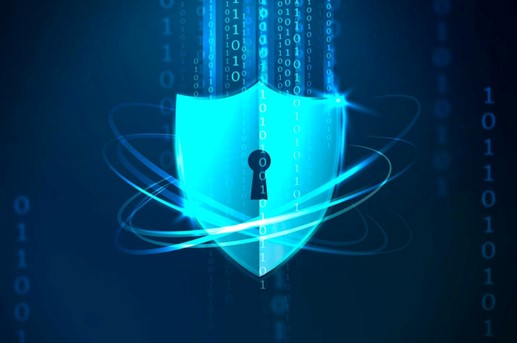
RED Compliance Beyond Europe: Key Insights for Global Manufacturers
8
min reading time
Why RED Compliance Matters Beyond Europe
At its core, RED applies to radio equipment placed on the EU market, but the way its cybersecurity clauses are written gives them wide relevance within the European context. The obligations for network protection, personal data privacy, and fraud prevention apply to all radio-enabled products offered in the EU, regardless of their complexity or intended audience.
RED’s scope covers an enormous variety of devices, from everyday consumer electronics to industrial systems that form part of national infrastructure. The breadth of the regulation ensures that a low-cost connected gadget is held to the same fundamental cybersecurity principles as a high-value industrial controller. This consistency benefits both the market and consumers by setting clear, predictable expectations for how devices must handle security risks.
These pillars are explained in our article Cybersecurity in RED: Adapting to Articles 3.3(d), (e), and (f), which details how manufacturers can align designs and processes from the start rather than scrambling later.
For manufacturers operating within the EU, the impact of treating RED as a design baseline is significant:
- Design consistency: Core security measures can be implemented once and applied across different models, reducing engineering overhead.
- Process efficiency: A single, well-prepared set of security documentation can be reused for multiple conformity assessments.
- Reduced delays: Products that are architected for RED compliance from the outset are far less likely to encounter certification blockers.
Designing products to meet RED from day one means addressing network protection, personal data safeguards, and fraud resistance as standard. This approach avoids the need for costly redesigns late in the process, keeps release schedules on track, and strengthens the technical file used in conformity assessments.
When RED’s structured obligations are aligned with methodologies from frameworks such as Common Criteria Certification, ISO/IEC 15408 Compliance, or EAL4+ Certification, the resulting security dossier becomes more versatile and adaptable. This alignment reduces duplicated work when addressing other EU legislation, such as the EU Cyber Resilience Act, which shares many secure-by-design principles.

EN 18031: Turning Requirements into Evidence
Legal clauses define what needs to be achieved, but they do not always explain how to demonstrate it. The EN 18031 standard series fills that gap by translating RED’s cybersecurity clauses into clear, measurable requirements:
- EN 18031-1: Network protection
- EN 18031-2: Personal data security
- EN 18031-3: Fraud prevention
By providing specific criteria for implementation and verification, EN 18031 creates a common language for engineers, compliance teams, and Notified Bodies. It ensures everyone understands the expectations for testing, documentation, and results.
As explained in CCLab's piece on navigating RED compliance strategies, integrating EN 18031 into the development cycle reduces the risk of late-stage certification issues and produces a structured, auditable technical file that is ready for review.
Early Planning Checklist:
- Define firmware update policies, including patch frequency, rollback capabilities, and secure signing.
- Establish credential and cryptography standards that align with RED and industry best practices.
- Decide on a device identity model: will each product have a unique certificate, key, or identifier?
- Create and maintain Cybersecurity Documentation Templates for collecting evidence during development.
- Build fraud-resistance mechanisms into both hardware and software and ensure they can be tested against EN 18031 requirements.
Doing this in parallel with development means compliance becomes an outcome of the process, not a separate project at the end. It also makes internal reviews more effective by providing a clear set of measurable targets.

How CCLab Helps Global Manufacturers Get RED-Ready
For companies navigating RED’s cybersecurity requirements, especially those building both Consumer IoT Security products and Industrial Internet of Things systems, the challenge is often in proving that security measures are effective, not just in implementing them.
CCLab Cybersecurity Laboratory supports manufacturers in meeting RED requirements through:
- End-to-end RED support: From mapping requirements to submitting to a Notified Body.
- Documentation preparation and review: Aligning all security evidence with RED’s technical file expectations.
- Accredited cybersecurity testing: Providing results that CerTrust (Notified Body ID 2806) can accept for EU Type Examination.
- Vulnerability Assessment and Penetration Testing Services: Identifying and mitigating weaknesses before formal evaluation.
- Reusable security dossiers: Organizing results for reuse across EU and non-EU submissions.
- Practical compliance resources: Guides and infographics to help keep cross-functional teams aligned.
As CCLab has extensive experience with Cybersecurity for Radio Equipment Manufacturers, it can also help teams see how RED cybersecurity compliance can fit into a broader strategy that includes Common Criteria Evaluation, should they be required in the future.

The Real-World Payoff
When RED cybersecurity requirements are built into the design process from the very beginning, the certification stage is more predictable, faster, and less costly. It becomes an exercise in confirming that requirements have been met rather than discovering and fixing issues.
Manufacturers who follow this approach benefit from:
- Predictable timelines: With evidence gathered and verified throughout development, there are fewer surprises at the submission stage.
- Lower costs: Avoiding late redesigns saves both engineering time and resources.
- Reusability of evidence: A comprehensive security dossier can be applied to multiple products or product families.
Treating RED compliance as a late-stage activity often leads to delays, repeat testing, and missed launch windows. By contrast, proactive integration of compliance ensures that security and certification move in step with product development.
This approach also simplifies the process of staying compliant over time. Post-certification reviews and planned updates can be scheduled without disrupting the product’s lifecycle, ensuring the device remains compliant with both current and evolving Cybersecurity Standards and Regulations.

Additional Benefits of Early Integration
By taking this proactive approach, manufacturers are not only ensuring that they meet current RED requirements but also positioning themselves to adapt quickly to future changes in Cybersecurity Standards and Regulations. The pace of technological advancement means that connected devices will continue to face new vulnerabilities and evolving attack methods. This reality underscores the importance of building security measures and compliance processes that are resilient, adaptable, and well-documented.
In practice, this means involving compliance considerations at every stage of product development. From initial design discussions to final testing, each phase should incorporate the requirements of the Radio Equipment Directive (RED) Compliance framework and the verification methods outlined in EN 18031. Doing so ensures that no aspect of the product’s security is left to chance or last-minute fixes.
Another often-overlooked benefit of early integration is improved collaboration between departments. Engineering, quality assurance, compliance, and product management teams can work from the same baseline of requirements and evidence expectations. This shared understanding reduces miscommunication, eliminates duplicated work, and results in a more efficient pathway to certification. It also makes it easier to reuse the same technical file for different devices, which is especially valuable for organizations with large and diverse product portfolios.
Finally, considering RED requirements from the outset allows for stronger, more consistent integration of other frameworks such as Common Criteria Certification or EAL4+ Certification when needed. While these may not be required for RED, they can add credibility and open access to additional markets or customer segments where higher-assurance evaluations are valued. The combination of RED compliance and advanced assurance schemes creates a compelling competitive edge.
Summary
Meeting RED cybersecurity requirements is more than an administrative hurdle for entering the EU market. It is a process that strengthens product security, builds customer trust, and supports long-term competitiveness. By aligning product design and evidence gathering with Articles 3.3(d), 3.3(e), and 3.3(f) and using EN 18031 for structure, manufacturers can protect networks, secure personal data, and reduce fraud risk.
A well-prepared technical file can be reused across multiple conformity assessments, which shortens time to market and reduces compliance costs.
Looking ahead, manufacturers that already meet RED standards will be better placed to adapt to changes in EU law without major redesigns or resource strain. A strong, well-documented security baseline is an investment that pays off throughout the product’s life.
By working with experts who understand both RED and wider cybersecurity frameworks, manufacturers can:
- Accelerate certification with targeted gap analysis and accredited testing.
- Avoid costly rework by planning evidence collection early in development.
- Maintain compliance through systematic updates and reviews.
The takeaway: The best time to design for RED compliance was yesterday. The second-best time is now. Build your global security baseline today and make compliance the engine of your competitive advantage, not the anchor that slows you down.
Related downloadables


RED Cybersecurity - Steps of Compliance Infographics
RED Cybersecurity - Steps of Compliance Infographics
Download this comprehensive infographic guide, which deep dive into the key stages of the Radio Equipment Directive (RED). Gain clarity on technical requirements, risk assessment, and strategic decisions to ensure your products meet EU regulations.


Guide for Radio Equipment Directive (RED)
Guide for Radio Equipment Directive (RED)
Read and learn more about the Radio Equipment Directive (RED), download our free material now.
Related news

Preparing Legacy Systems for Common Criteria Certification
Legacy systems power critical operations across industries worldwide, yet they present unique challenges when organizations pursue Common Criteria certification. The clock is ticking for manufacturers and enterprises who must navigate complex compliance requirements while maintaining operational continuity. Organizations pursuing Common Criteria certification must address unique challenges when dealing with legacy infrastructure, but with the right approach, success is achievable. The urgency cannot be overstated. Regulatory deadlines approach rapidly, and the cost of non-compliance continues to escalate. Legacy systems that once served as reliable workhorses now require strategic transformation to meet modern security standards. This guide provides actionable strategies to prepare your legacy infrastructure for certification success.
10
min reading time
.jpg)
The CRA as the Cornerstone of the EU Cybersecurity Ecosystem
This article provides an in-depth overview of the EU Cyber Resilience Act (CRA), explaining why the regulation was introduced, its key security requirements, conformity assessment routes such as Module A, the role of harmonized standards, and the lifecycle obligations manufacturers must meet.
10
min reading time

Beyond 2025: Why RED is the Blueprint for CRA Success
The August 1, 2025 deadline for the Radio Equipment Directive (RED) Delegated Act has passed. You have likely spent the last year scrambling to test devices, freeze software, and secure approvals. But just as the dust settles, a new challenge looms: the Cyber Resilience Act (CRA) is now getting in force, with full application expected by December 11, 2027. The immediate worry for many manufacturers is simple: Was the investment for RED wasted? Is the work done for the 2025 deadline just a temporary fix destined to be withdrawn when the CRA takes over? The answer is no, if a strategic approach is taken. The two regulations are "in sync," and the work done for RED-DA is the essential foundation for future CRA compliance.
9
min reading time
